I wanted to see another side of Africa – the Africa of green hills and golden savannahs; delicate wispy-branched acacia trees and towering snow capped mountains; exotic animals lurking in long grass or beside parched waterholes; the white sands and turquoise waters of the Indian Ocean coastline. I mean, literally, the other side….so after our latest travels in West Africa (and a quick wintery break at home), I set my sights on Kenya, all the way across the continent. We’ve travelled widely in East Africa before, but our experience with Kenya was limited to riding a bus across one corner of the country on our way from Tanzania to Uganda.
Oyv had to work but I had some spare time, so I called my sister. Many girls might expect their sister to suggest a spa weekend with shopping, brunch and spa treatments. But my sister knows better than that:
Sar: What are you doing in February? Up for a trip?
Goof (nonchalantly): Sure. Which shots do I need?
Sar (after a brief pause): All of them. Get them all.
Goof: Where to?
Sar: Kenya. Don’t forget your malaria meds.
Goof: Hakuna matata. I’ll book a flight.
Sar: Perfect. See you in Nairobi!
And so one snowy morning in late January I flew down to Nairobi. I was looking forward to seeing Goof but a little uncertain as to what I’d find when I arrived alone, in this city so infamous for corruption and crime that its own name has been twisted into the unflattering moniker ‘Nairobbery’.

‘Welcome to Kenya, on behalf of myself, my family and my country’, said James the taxi driver when I met him outside of arrivals at Jomo Kenyatta International Airport. He pointed out the perimeter of Nairobi National Park as we drove past: a 117 square kilometer reserve perched right on the edge of Kenya’s capital city. Visitors to the park can look out for lions on the prowl and many of the other usual suspects involved in an African safari – against a distant backdrop of skyscrapers and city lights.
In the early 1900s the residents of Nairobi clashed so often with wild animals like lions and rhinos that they had to carry guns to protect themselves. As a result the colonial government confined the animals to this area, which in 1946 became British East Africa’s first national park. It’s partially fenced to keep animals out of the city, but encountering one of the Big Five somewhere downtown wasn’t what had me concerned about Nairobi. I asked James about walking around there by myself, and he said it was safe, even at night. ‘Really! Even at night?’ I echoed in dubious surprise. ‘Yes sure..until about eight pm’ James added. Since I don’t usually even eat dinner before eight I mentally prepared myself to just starve.
As it turns out the worst thing that happened to me in Nairobi was that the hotel lost my booking, but that was fixed easily enough. I made my way out into the streets to meet a guide I’d hired for a walking tour. Augustine and I picked up lattes at Java House and he led me around this newish city – it’s only a little over one hundred years old. We started at the Stanley Hotel, Nairobi’s first, built for visiting VIPs and the country’s earliest tourists who were already enthused at the prospect of big game hunting.
The British established Nairobi (removing the local Masai people from the land in the process) as a stop on their East African Railway project in the 1890s. The city flourished and by the next century it was the capital of British East Africa. Today it’s the biggest city in the region and most of the colonial buildings have been replaced with new concrete constructions after Kenya achieved independence in 1963. Augustine and I visited some of the remaining old ones like the McMillan library, a dim and dusty building filled with stacks of decaying books and piles of old newspapers awaiting digital transcribing. The library also boasts the stuffed head of a lion (also decaying), forgotten on the floor in an upper hallway and apparently used as a door-stopper.
We climbed up the Kenyatta Convention Centre to a defunct helipad for great views over this sprawling African capital.

Saying goodbye to Augustine I made my way to a local restaurant I’d looked up on MapsMe. Kenya itself may be new to me but Africa is familiar and I recognised the ultilitarian canteen-style ‘ambiance’ and the food immediately. I dug into a plate of ugali – a slab of thickened maize flour mush – with spinach sauce. Ever mindful of the front desk clerk at the hotel who had shortened my curfew from James’ estimate of eight pm to only seven pm, I caught a cab home as the sky darkened. Where earlier in the day I’d been able to pick my way down and across streets with relative ease, all pedestian areas now heaved with a mass of people and the roads were clogged with honking matatus (mini-busses) and shouting conductors hollering destinations and herding passengers aboard.
It was time for me to stake out an optimal spot in the hotel lobby where I could drink wine and stare fixedly at the front door, waiting for Goof to arrive. And the best thing that happened to me in Nairobi was seeing her walk through that door.
Goof and I were bound for the Masai Mara National Reserve, on a twelve-seater prop-plane to stay in a small tented camp on a three day safari – truly another side of Africa.
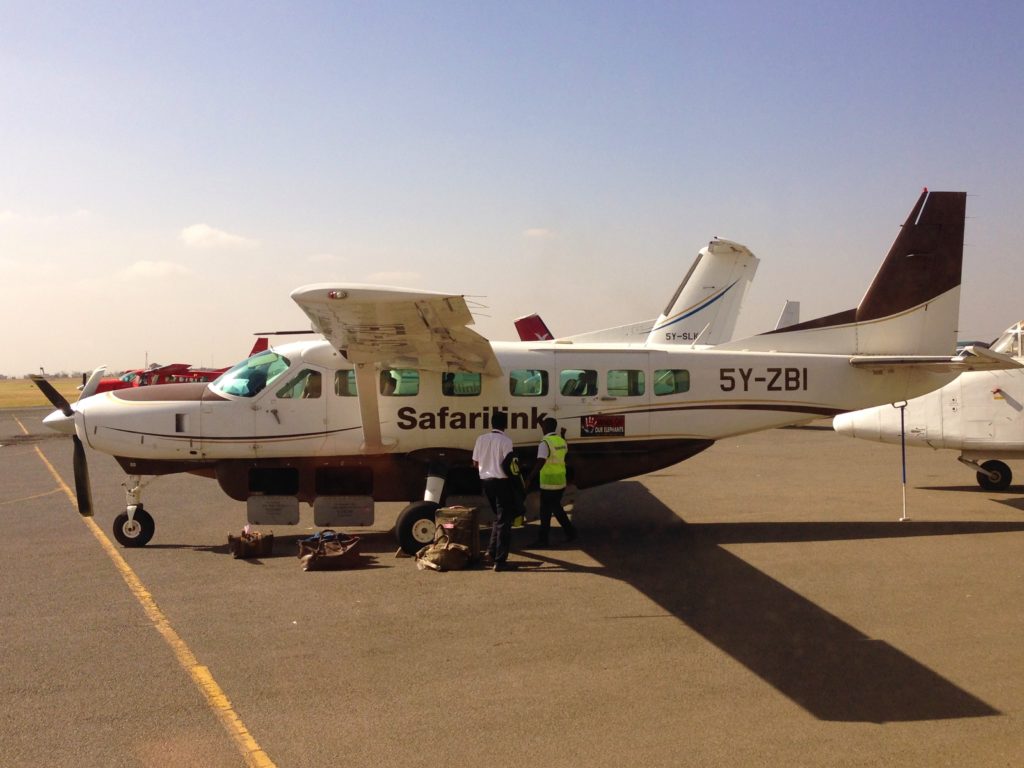
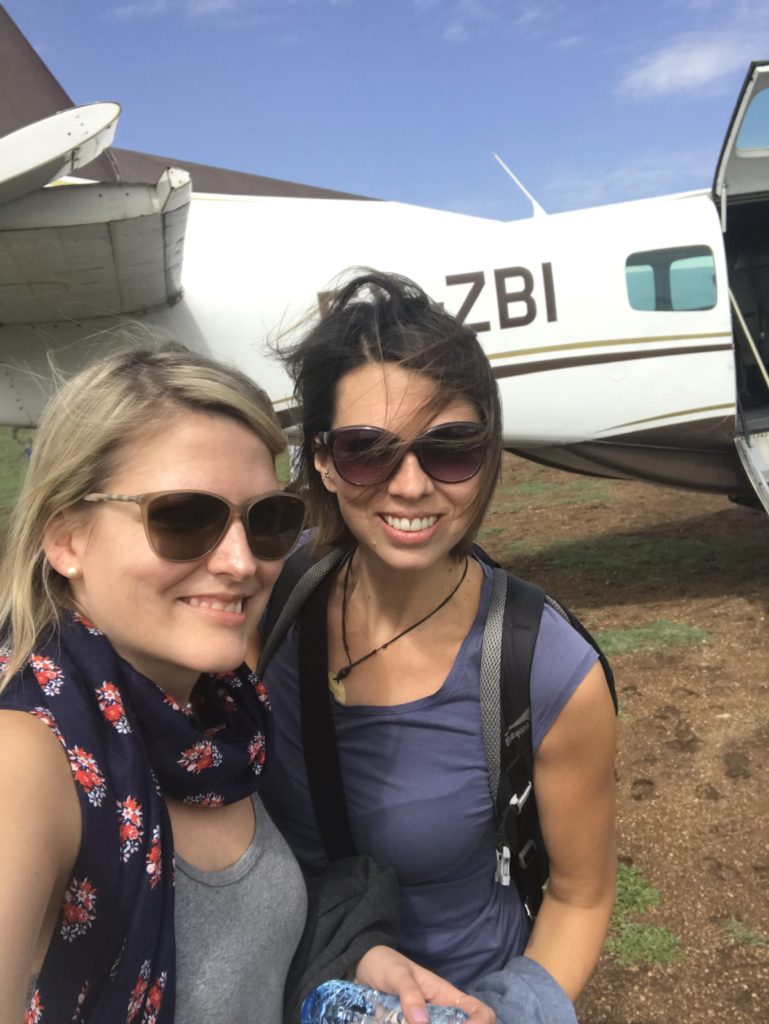
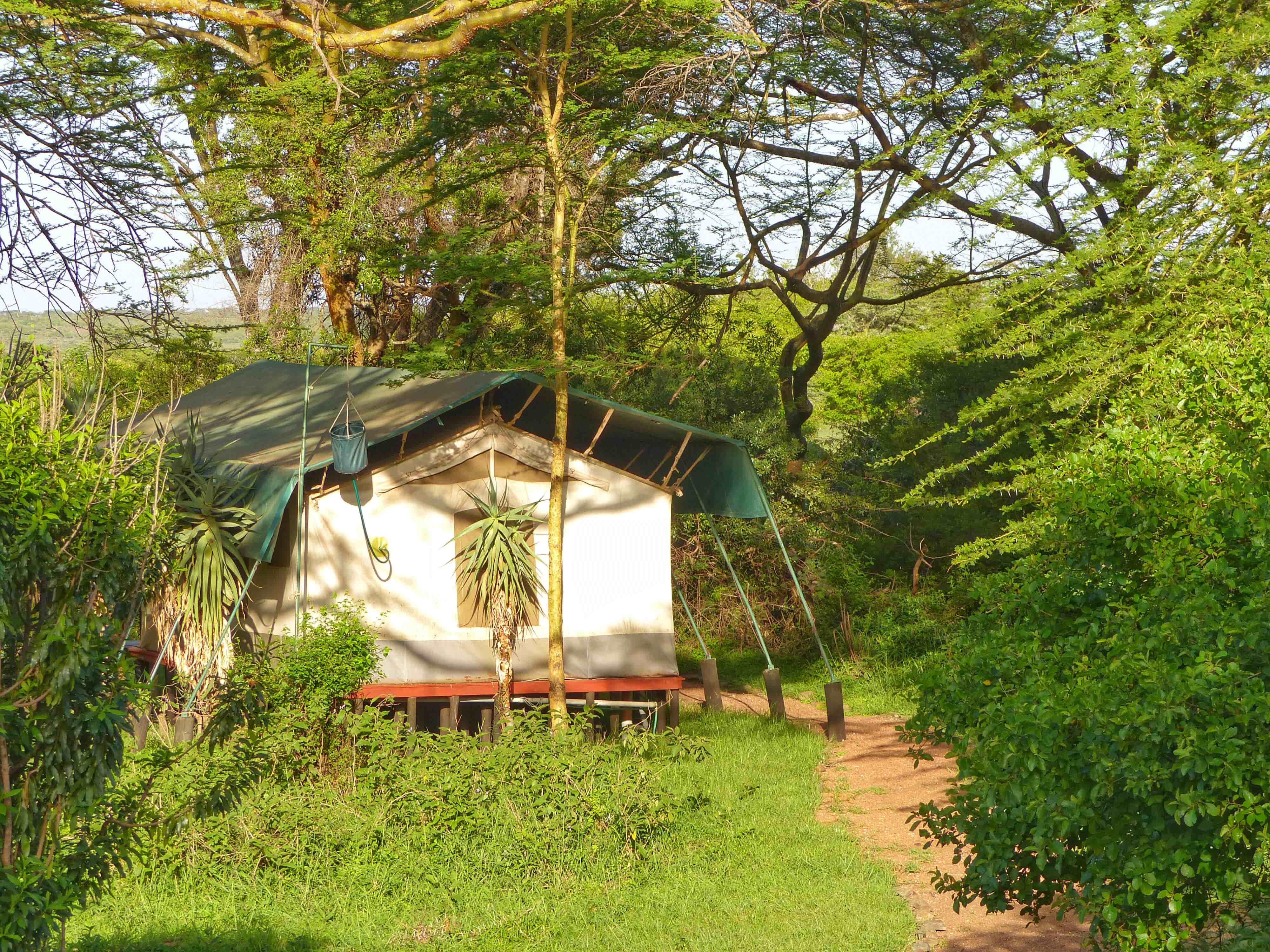

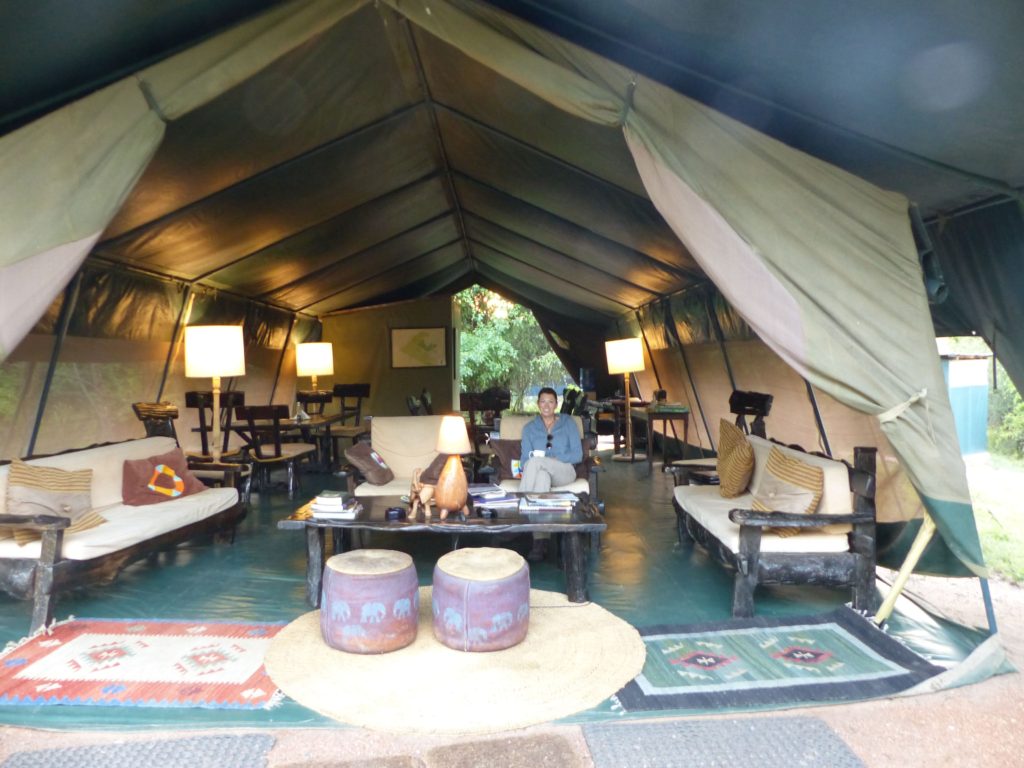
The Masai Mara is undoubtedly Kenya’s number one draw. It’s everything you’d want a safari to be, and then a whole lot more. Our plan included game drives during the daytime and at night, so that we could see the park and its inhabitants in every light and aspect.
During the day we went out in search of The Big Five – lions, leopards, rhinos, cape buffalo, and elephants.




But those aren’t the only park residents we saw:


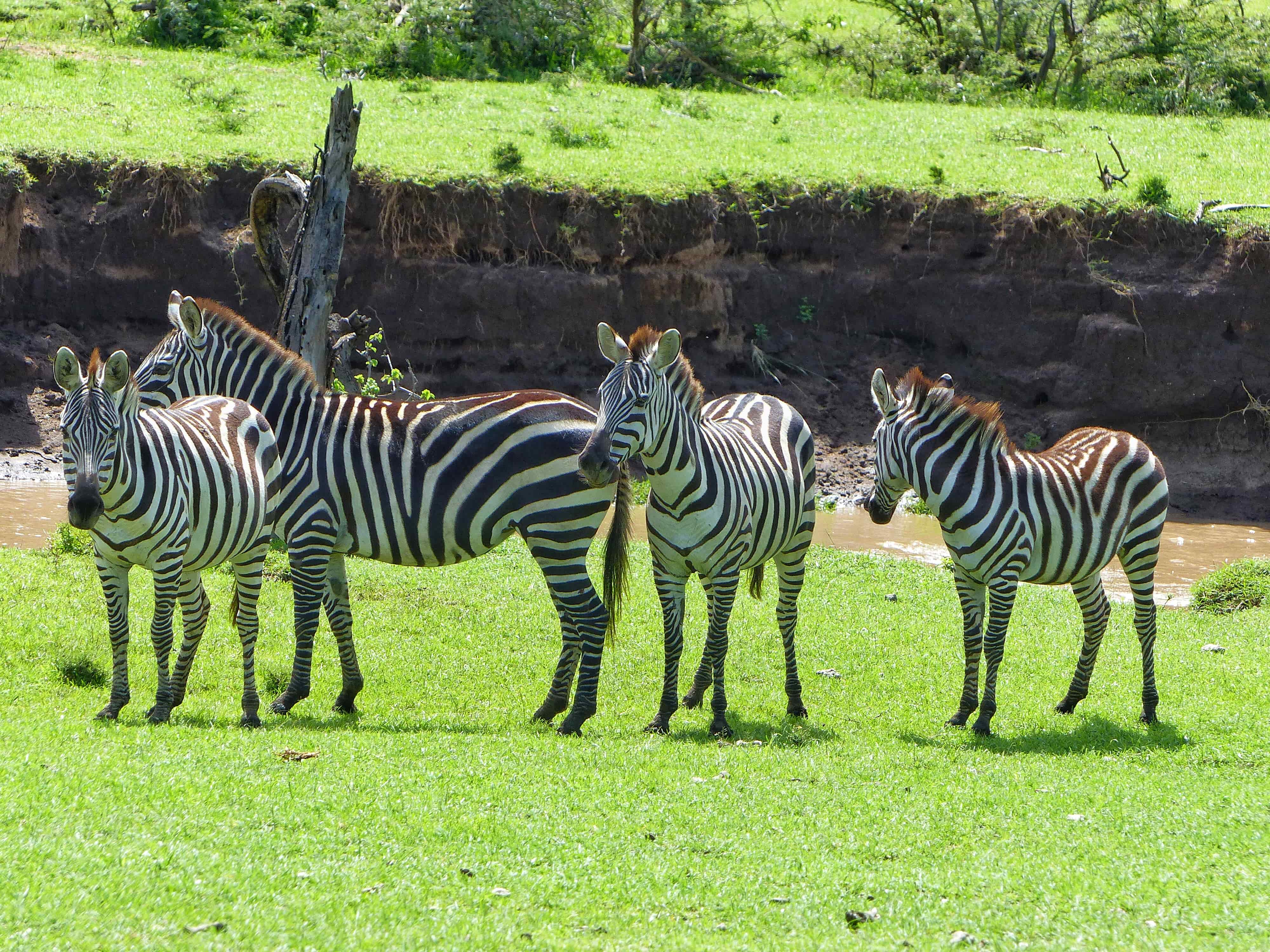

Basically, there is no shortage of wildlife in the Masai Mara.
We watched Masai men herding cows on the fringes of the park – and kids safeguarding sheep and goats just metres away from riverbanks where crocodiles basked in the sun, or pods of hippos came snorting and whooshing up for air.
In addition to being eagle-eyed game spotters, our guides Wilson and Samuel knew all about setting up a mean picnic overlooking a river or afternoon tea under the wide open sky, and serving up sundowners in the bush.



Speaking of picnics, we watched a lion devour a zebra, the victim’s delicate stripy legs crossed daintily at the ankle. A vulture stood nearby, wings folded and looking remarkably like a stuffy butler overseeing a formal dinner. Opportunistic hyenas paced back and forth and a brave jackal repeatedly dashed forward and snatched up bits and pieces of zebra for himself.


On our first night as we drove home in the dark, Samuel suddenly pulled out an infrared spotlight and swept its beam over the bushes on either side of the track. ‘You see?’ Wilson murmured, braking and turning off the engine. And Samuel shone the red light on a bushbaby scurrying up a tree and then a white-tailed mongoose scampering into the shrubbery – animals you don’t usually see by daylight. ‘It’s a city in the Mara.’ whispered Wilson, as the jeep’s headlights caught and reflected the glittering eyes of a herd of wildebeests hunkered down for the night.
At the end of each day a three course dinner awaited us in the Mess Tent where we’d eat with the handful of other guests.
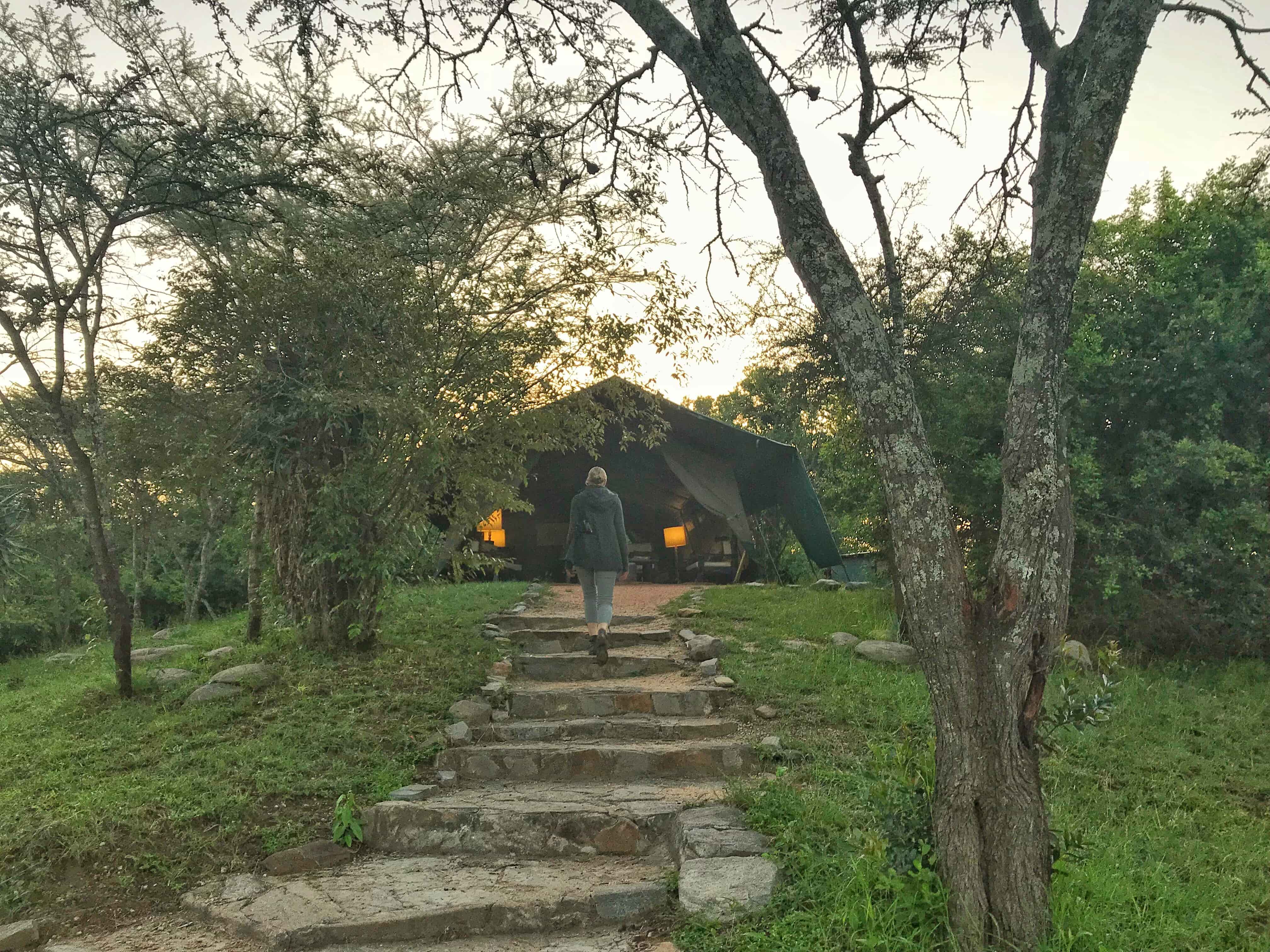
Before bed the ever-considerate staff turned down our beds and placed a hot water bottle in each one, while we were busy drinking wine around the campfire. And then we’d go to sleep listening to the noises of the woodlands right outside our tent.
On the third day we went for an early morning walk with Wilson and Samuel. Since we were on foot rather than safely ensconced in a jeep, our guides brought a ranger named Peter along, and Peter brought a gun.

The sun crept up over the horizon and we saw yet another side of the Mara.

Wildebeests, antelopes, gazelles and zebras who’d huddled together during the night got up and straggled out over the plains to graze. Nocturnal hyenas finally stopped their barking laughter and slunk away. It was the wildebeests’ turn to make all the noise: they communicated in staccato, honking grunts. The sky was a huge blue dome over our heads and the savannah, dotted with iconic Acacia trees seemed to stretch on forever ahead of us.

And then it was time to go.
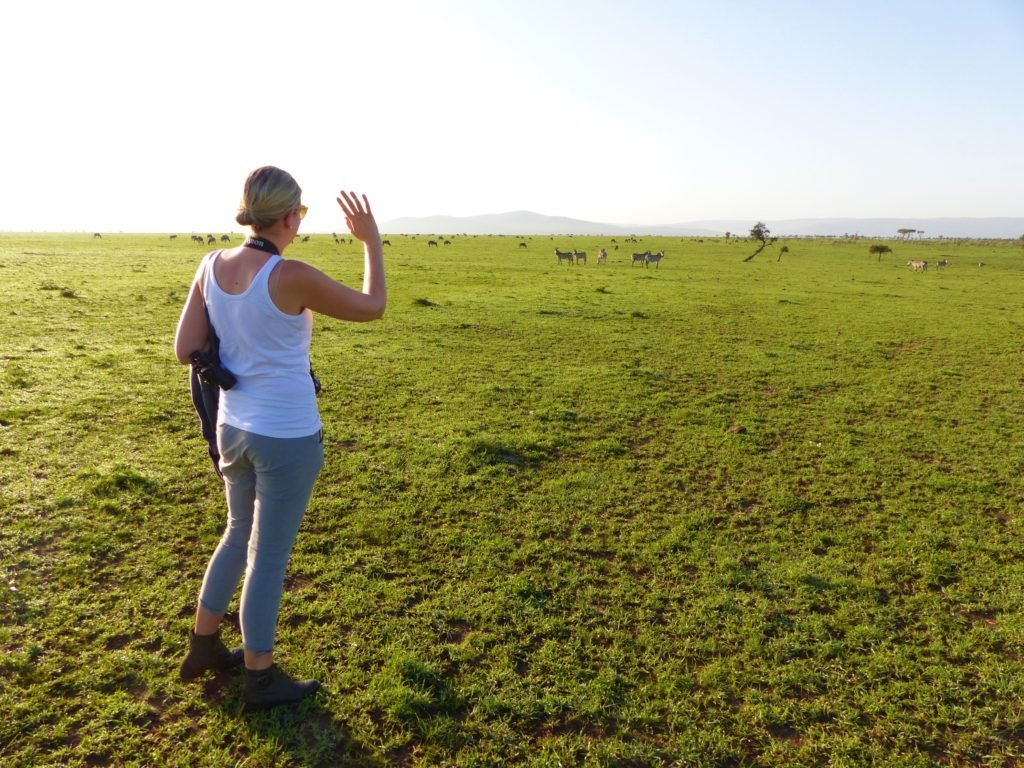
We ate breakfast at the camp and packed up. We were sad to leave; it was an epic safari. But we had another, completely different experience waiting for us and a flight to catch to get there.
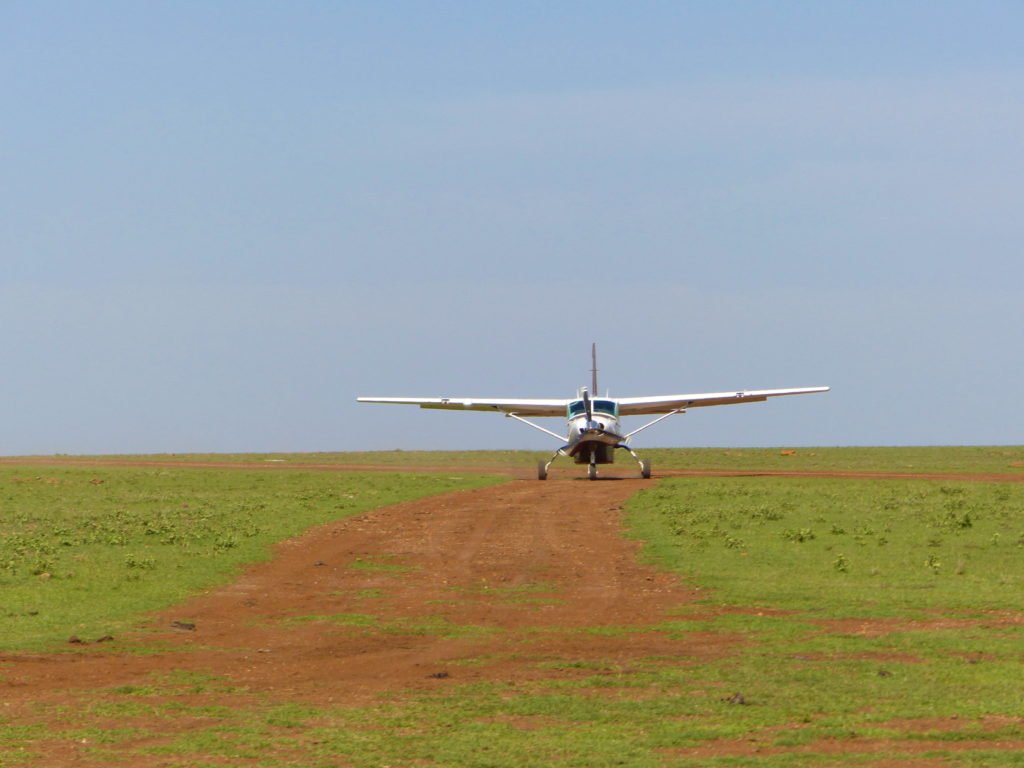
Read More
For more of my adventures (and misadventures) in Kenya, check out the rest of my stories from the road.



